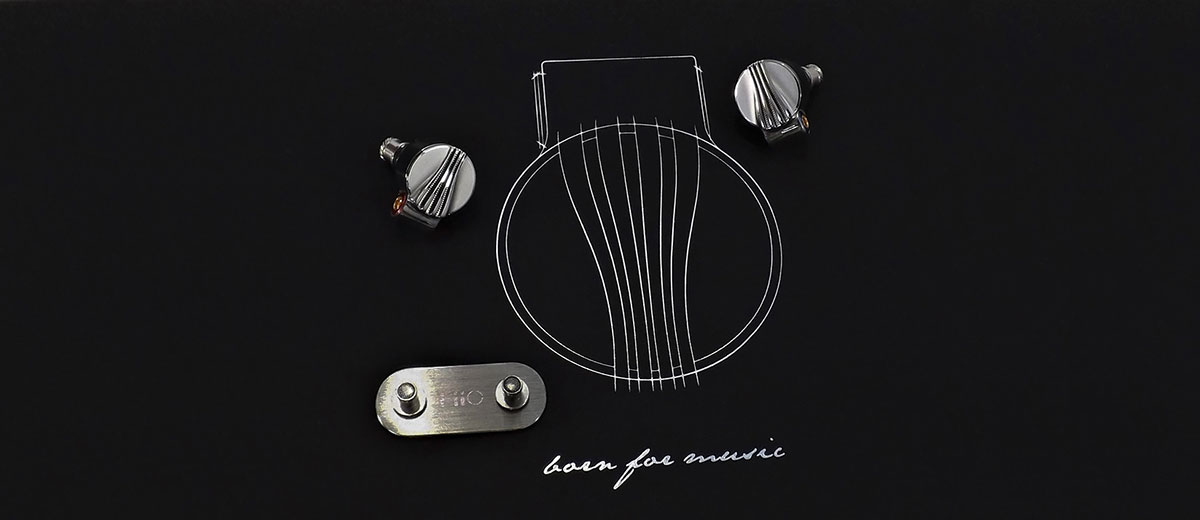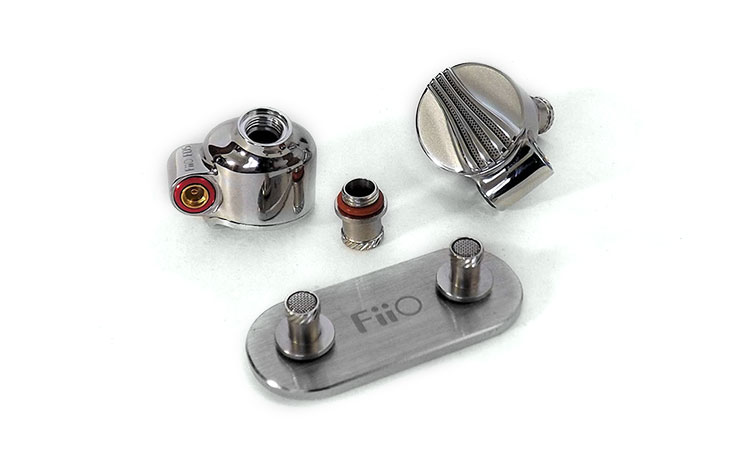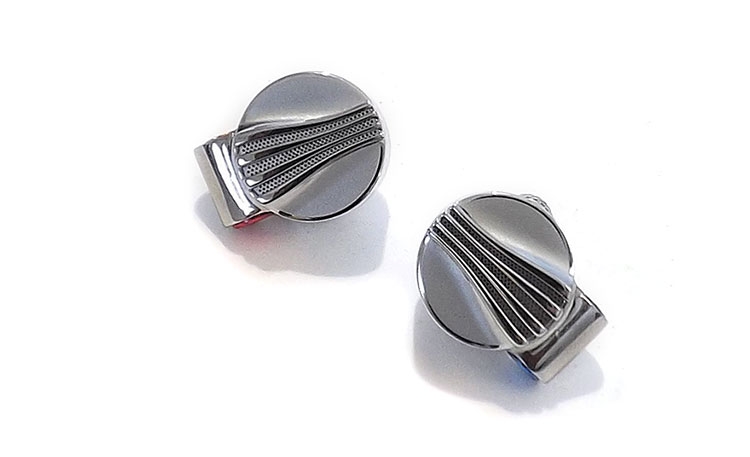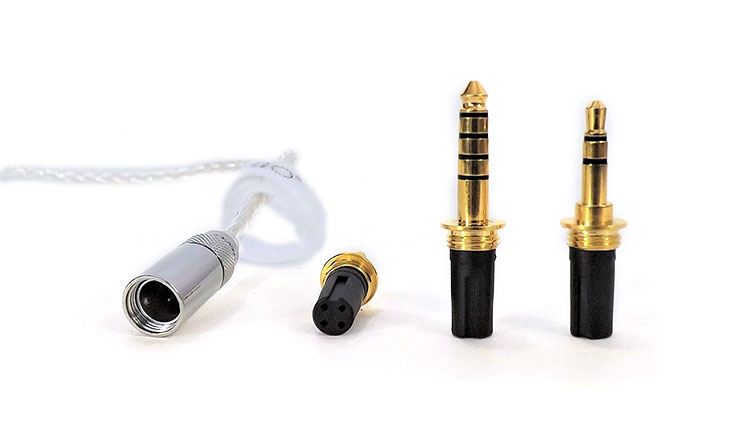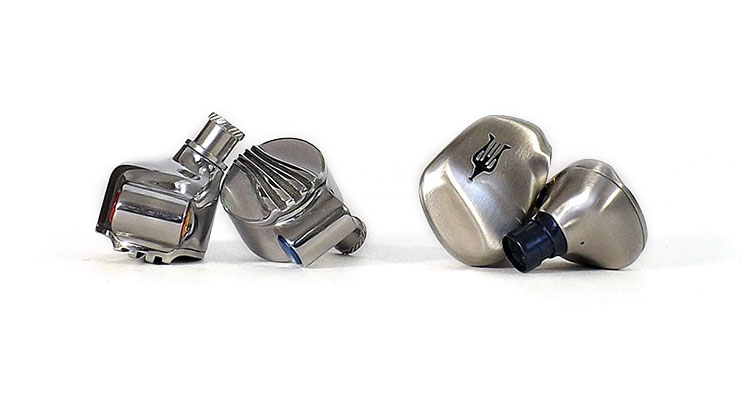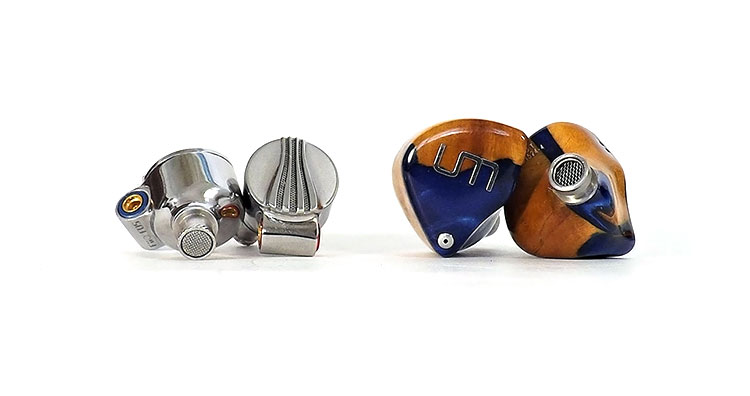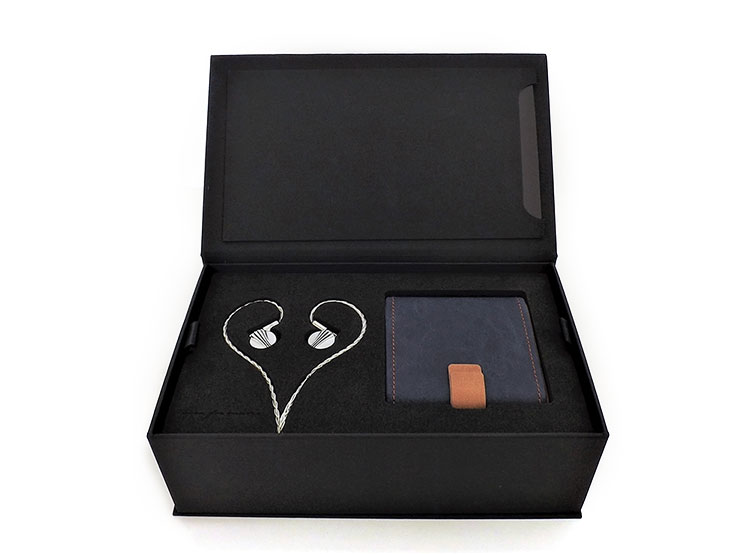The FiiO FD5 is a new flagship single 12mm beryllium-coated dynamic driver universal IEM featuring interchangeable sound tubes. It is priced at $299.99
Disclaimer: The FiiO FD5 sent to us is a sample in exchange for our honest opinion in this review. We thank FiiO for this opportunity.
To learn more about FiiO reviews on Headfonics you can click here.
Note, this review follows our new scoring guidelines for 2021 which you can read up on here.
Most people would say that 2020 was a bad year except for me. I see it that way because I am a glass-half-full kind of person. 2020 seemed like a good year for the single dynamic driver segment and quite a few companies were churning new products in this segment such as Campfire Audio and their Vega 2020 at the high-end.
Of course, you know FiiO has some tricks of their own when it comes to this segment and they display it all in their latest offering, the FiiO FD5. This is their flagship single dynamic driver IEM and it brings some unique features to the table.
So let us dive right into this rather unique looking offering from FiiO.

Tech Inside
The FiiO FD5 is a rather complex IEM in design and concept. It uses raw materials that are known for longevity and performance throughout the entire design along with some exclusive innovations.
FiiO lays claim to three separate revolutionary acoustic design breakthroughs that make the FD5 the flagship IEM that they are.
There is more innovation in other areas as well, for instance, the neat stock wire with a rather unique and innovative feature. More on that later on.
Driver
One of the FiiO FD5 breakthroughs is their newly designed 12mm Beryllium coated Diamond-like Carbon (DLC) diaphragm which is rather large compared to other IEM driver releases.
This diaphragm according to FiiO resists ripple-like movements and its rigidity allows it to be more responsive and accurate.
This driver employs lots of cool tech like an N52 magnet with a 1.5 Tesla magnetic Flux. A Japan Daikoku copper-clad aluminum voice coil. The list does not end here with the cool tech.

Acoustic Prism
One of the FiiO FD5 design features is what FiiO calls a front Acoustic Prism. With this feature, FiiO claims to improve time phase issues.
This tech is similar to certain tweeters that have a phase plug in front of the dome or cone to diffuse sound instead of constantly directing it straight at the listener. FiiO calls it a conical device and they place it directly in front of the driver.
The conical device controls and creates different wavelengths and creates a combined direct and reflecting sound that is claimed to improve imaging.
I used to build lots of speakers and one of my favorite tweeters to use was a particular tweeter with a phase plug upfront because I felt they were smooth and sweet-sounding to my ears and perhaps FiiO captured the same spirit of those drivers in the FD5.
Rear Volcanic field System
Another cool feature of the FiiO FD5 is the Rear Volcanic Field system which FiiO claims to reduce low frequency standing waves. FiiO says this design reduces distortion, especially in the bass region.
Standing and back waves are a major contributor and cause of distortion in cone speakers. Most times it’s the cause of things like nasty resonances and bass bleeding into the midrange area.
This system seems to work very well since I can attest that the FD5 can take a considerable amount of deep bass boost with little to no distortion in the bass while leaving the rest of the frequency spectrum untouched.
Open Back Concept
I have been waiting for someone to introduce this for a very long time. It was the obvious next development to come for me. Think for a minute of a good closed-back full-sized headphone and the list will be a short one. Most good headphones are open back.
So why not an open back IEM? Well, FiiO incorporated an open back design with the FD5. FiiO says it is a semi-open design that was obtained by using natural curves with different textures to create Audiophile art and to vent the Volcanic Field system.
The design works for me and it has a bling aspect to it. These IEMs look as if they belong in a jewelry shop instead of an audio store.
Interchangeable Sound Tube
The FiiO FD5 comes with interchangeable output nozzles and FiiO includes 2 sets. The stock nozzle is approximately 4.5mm which is a common size. The second nozzle is thinner and looks like a 2.5mm size which is not a common size.
With this feature, there is a con which is that you only get 2 size sets of tips and cannot use any other tips because of the narrowness in nozzle size. All the other tips will fit loosely and will stay lodged in the ear canal every time.
My impression of the sound signature with the narrow sound tube was that the tonality was relaxed and everything seemed to be pushed back in the soundstage and at the same time everything seems to widen up.
The clarity in the midrange was improved for me at least and did not sound as edgy with the thinner tube and triple flange. The highs were slightly reduced as well.
Design
The FiiO FD5 is made of solid stainless steel polished to a mirror-like finish. The shape of the FD5 is cylindrical with an angled output nozzle.
The all-metal shells have some girth but are rather comfortable. They seem to weigh more than the 11 grams specified by FiiO but in my opinion, it’s an illusion because of the hefty construction.
I like the color cues on both sides of the MMCX connector as well and it gives the user a good visual cue on which is left and right.
Comfort & Isolation
The 11 grams specified by FiiO on the FD5 seems a modest weight for an IEM. These seem substantially hefty but this fact does not affect comfort much. There was just a slight pressure point inside the ear canal from the tip holding on to the 11-gram IEM.
Once in, they do not fall out especially when the earloop is properly placed. The design seems to anchor in well.
Isolation is typical of a conventional IEM and the semi-open back design seems to not affect isolation. There is a slight amount of bleed from the vented backplate. It is not so bad, just use good judgment with that volume control in public closed-in environments.
Stock Cable
Here is another neat and innovative idea that comes with the FiiO FD5 out of the box. The FD5 comes with a high-quality 8 core silver coated wire that not only does it use metal connectors but also has swappable plugs.
The same wire can be used with the included 3.5mm, 2.5mm balanced, or the 4.4mm Pentaconn plug. You simply loosen an outer ring on the plug and slide in and out another tip by lining up a slotted side and pushing in the connector. Then you re-tighten the ring.
It beats the old system of using an adapter that extends the length of the plug itself which is somewhat undesirable. This one regardless of the tip installed looks stock and as if nothing has been added.

Packaging & Accessories
The word premium comes to mind unboxing the FiiO FD5. When you first slide out the black box from the printed sleeve and reveal the contents, it seems minimal. However, when you dig in you will find lots of hidden items.
On the top layer of the box are the IEMs displayed along with the suede carrying case. Once you remove that layer you will find 12 sets of various tips in a foam caddy.
Next to the tips, there is a black FiiO branded box with the small diameter sound tubes on a stainless steel holder, a cleaning brush, and 2 swappable connectors which are the 4.4mm and the 2.5mm balanced type. The 3.5mm TRS is preinstalled. There is also an MMCX connector removal tool.
There is a cleverly hidden pocket on top of the box that holds all the included literature which completes the package.
Sound Impressions
First Impressions
The FiiO FD5 aims for the Harman response curve and are fairly close except for the 3 peaks I detected in the tone sweep test. Those peaks are apparent on FiiO’s generated frequency graph. The 3 peaks are in the 2khz, 4khz, and between 7 and 8khz ranges.
These peaks give the FiiO FD5 some coloration but not in a bad way and are not exaggeratedly large either. It gives the upper midrange some needed presence because these IEMs tend to sound warm and slightly bass-heavy.
My preferred method of listening to these which was a surprise even to me was with the narrow tube and large triple flanges because it relaxed the sound signature overall and tamed some of the midrange edginess.
My first listen presented a good amount of bass impactfulness but in no way should the FD5 be considered a basshead IEM because there is a general balance in the frequency response and a hi-Res tuning.
Bass
The FiiO FD5 has a very good bass response in my opinion and should not be a surprise since some FiiO IEMs are popular for good bass response and the FD5 does have the Volcanic field system which seems to work well.
The driver seems to handle plenty of boost before going into major distortion and seems like a good candidate for EDM, Hip Hop, or popular music with heavy basslines.
The bass has a slight elevation more particularly in the midbass section but it is fast and precise with lots of energy behind it. The bass digs deep and bass tones come in clear with good note distinction.
The tone sweep test demonstrated that these can easily go below 20hz. They start to gently roll-off at around 26hz and to me were audible down to 16hz.
Midrange
The FD5 midrange dips in output a couple of decibels according to the frequency graph versus the midbass but it does not seem deficient or veiled in listening tests. It seems fairly balanced in frequency response.
Although there is a reduction in the output the midrange seems to take a more forward position than FiiO’s frequency graphs show, particularly with the wide bore sound tubes. This forwardness comes with a touch of expansiveness and elements seem fairly wide.
Vocals have a certain upper tone crispness that is pleasing to me and that trait is probably due to the 3 peaks in the upper mid-region and lower high-frequency section. Regardless of those peaks they are fairly smooth and well detailed.
Treble
I find that the FiiO FD5 has clear highs and good resolution however at times they tend to produce highs with a touch of splashiness.
Perhaps is that the FiiO FD5 high frequencies are unforgiving and if the recording does not have good highs the FD5 will not hide the fact. Indeed, listening to Pat Metheney’s Come and See track, the highs were crisp and clear but not so much with other recordings.
The highs seem to roll off early in the tone sweep test and start to drop in output at around 13khz but in a gradual slope which slowly dips.
Staging
I think the niche element of the FiiO FD5 is the ability to obtain two different sound signatures by swapping out the sound tubes. The major changes are actually in the soundstage.
The wide bore tube sounds more up close and personal. The soundstage since it is closer to the listener is also more intense in tonality.
Once you switch to the narrow bore sound tubes, the soundstage is pushed back a few feet and the midrange intensity is reduced removing an edge in the midrange that was prominent in certain recordings.
The staging capabilities of the FD5 are mostly in width, height, and depth and in that order in size perception. The staging is realistic and not exaggeratedly large but can project a fairly realistic sound positioning panorama.
Detail
The FiiO FD3 is a fairly revealing IEM producing a good amount of the microdetails and nuances present in recordings. I think it is one of their best qualities.
Again, when listening to Pat Meteney’s New Year track I could hear Pat breathing heavily at the intro guitar solo more so on the FD5 than other IEMs in their price bracket. Another aspect of the FD5 is its ability to resolve and keep congestion to a minimum and keep elements within a track separated one from the other.
Layering is done well and the FiiO FD5 gives the user a decent amount of directional information and placement but to me, there was a slight lack of depth.
Synergy
The FiiO FD5 is an IEM that is more dependant on the source rather than the amplification. I could comfortably push the FD5 with a USB DAC dongle like the Ztella and it seems to like power rated in watts just the same with a small gain in quality and impactfulness. They slightly scale in performance with improved power from a dedicated DAP such as the FiiO M11.
The general sound signature does not suffer from bad sources, only in the high frequencies it seems and these IEMs seem to play well with most formats.
The FD5 is an IEM comfortable with any kind of music or genre. They seem to be designed purposely for a general appeal that will please most people and does not aim at a particular niche audience.
Selective Comparisons
Meze Audi Rai Solo
Technical
The Meze Rai Solo is a single driver IEM with an innovative driver developed by meze which evenly crosses the contact leads across the driver dome to obtain better symmetrical piston motion and therefore eliminating distortion.
The concept works and the Rai Solo has a subtle V shape signature that is pleasing for most types of genre and is comfortable with power sources of all types.
Construction is different in appearance but not in materials and both these IEMs use stainless steel shells with color-coded MMCX connectors. The Rai Solo has a tuned output nozzle which are pretty to look at but are always hidden by the rubber tip however, they are not interchangeable.
Both these IEMs come with a decent carrying case, a good assortment of rubber tips, but the stock wire win goes to the FD5 hands down with 3 connection options and an 8 core silver braided wire.
The Meze carrying case is more appealing to me but my taste veers to modern and industrial every time but you might like the softer FiiO case with natural tones more. The Meze carrying case is more compact.
Sound
There is some contrast here because I like the highs more on the Rai Solo and to me, they sound more accurately produced with a good amount of presence but the FiiO FD5 has a better bass response.
The midrange has more presence on the FD5 and the Rai Solo has a warmer sounding midrange due to the slight V-shaped signature.
In summary of sound characteristics, the FiiO FD5 is the flatter in response and closer to the Harmon response curve while the Meze Rai Solo has the slight V-shaped sound which can be fun at times but the analytics aspect goes to the FD5.
Unique Melody 3DT
Technical
Unique Melody has recently introduced the 3DT and is on the desk for review soon so this is a spoiler alert. Would it be fair game to compare an IEM with a single dynamic driver against one that has three?
Visually you could never confuse the two. The Unique Melody 3DT is colorfully made with wood and uses .78mm connectivity. Blue with orange and wood tones dominate its looks. Even the included carrying cases are contrasted to each other.
Unique Melody is a fit name for a company that includes within the accessories of an IEM a carrying case that looks like a mini beach bag. I love it because it is different with a twist of modern thinking.
The problem is that there is not much else included. The list of included accessories is short and again, the wire FiiO includes is unbeatable with the unique interchangeable plugs, a good amount of tips, plus interchangeable sound tubes making the FiiO the more versatile of the two.
Sound
Once again there is a contrast here and I do not wanna give away too much information since the Unique Melody 3DT is up for review soon but I can give some general descriptions. You all are gonna have to visit us again for the rest.
The bottom line here is the following. Do you want the FD5 flat and gentle sound signature with musicality or do you want the more forward presentation with increasing intensity and presence of the 3DT? What’s your mood.
Our Verdict
FiiO demonstrates why they are one of the leading makers of IEMs and audio devices in general with the FD5.
The FiiO FD5 is a good looking and a hefty constructed IEM that has a sound signature with a general appeal that does well with almost any music genre plus is well accessorized with a good unboxing experience.
Separate from the excellent sound you get a complete package that leaves little to be desired which on the buyers’ end leaves a level of satisfaction knowing they got plenty for their hard-earned bucks.
FiiO FD5 Specifications
- Headphone type: In-ear IEM
- Frequency response: 10hz – 40khz
- Driver: 12mm Berrylium coated Diamond-like Carbon dynamic driver
- Impedance: 32Ω @ 1khz
- Sensitivity: 109db @ 1 mW
- Max Input Power: 100nW
- Cable: 8 Strand Monocrystalline Silver plated
- Connectivity: 3.5mm TRS, 2.5mm TRRS balanced, 4.4mm TRRRS Pentaconn
- Cable length: 120cm
- Weight: 11 Grams

